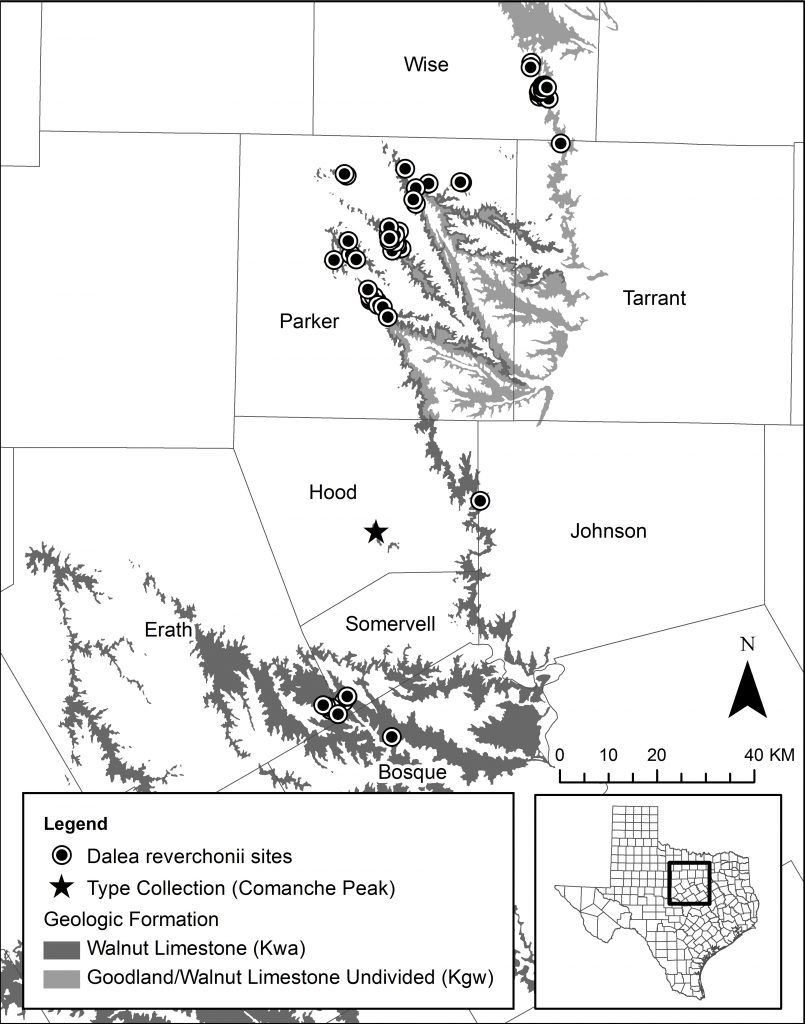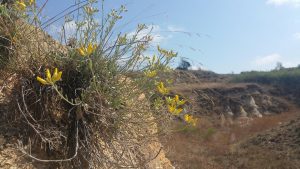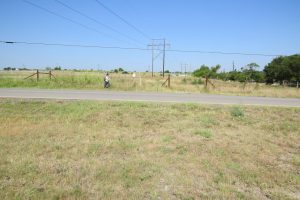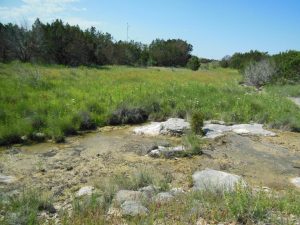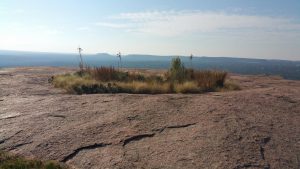Related Links
- Gratiola quartermaniae
- Isoetes butleri
- Cyperus granitophilus
- Pediomelum cyphocalyx
- Pediomelum reverchonii
Dalea reverchonii (Comanche Peak Prairie Clover)
In the spring of 2012, BRIT botanists conducted extensive surveys of limestone prairies, barrens, and glades in the Fort Worth Prairie and northern Limestone Cut Plain of north central Texas. The Fort Worth Prairie (also known as the Grand Prairie) is a vast grassland with gently sloping, almost level plains dissected by valleys along rivers and streams. This prairie ecosystem is underlain by limestone geology with limestone bedrock near the surface across most of the region. This limestone gives the Fort Worth Prairie its unique features. Thin soil over top of limestone restricts root penetration limiting the growth of woody vegetation. The area historically supported a vast grassland with woody vegetation mostly limited to river edges, hilltops, or mesas where soil was deeper and moisture more plentiful. Areas where limestone outcrops form “glades” reminiscent of the cedar glades found in the Central Basin of Tennessee were searched for Dalea reverchonii. Satellite imagery and geologic maps were used to identify other possible locations for exploration. When a plant was found, herbarium collections were made.
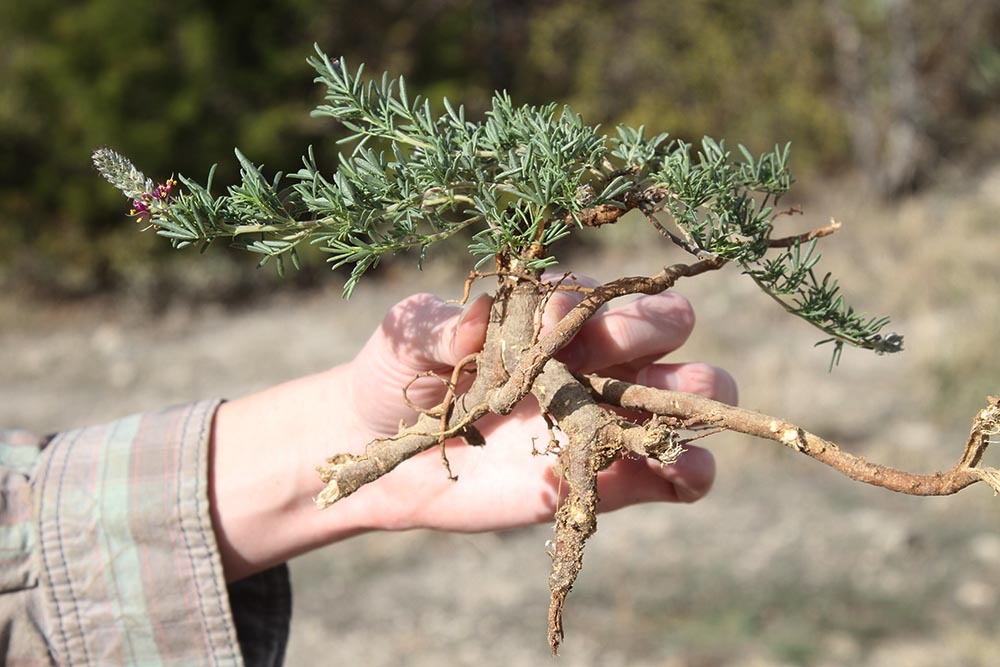
Dalea reverchonii was discovered in 1882 by botanist Julien Reverchon at Comanche Peak in Hood County, Texas and was described as a new species in 1886. The species was collected again in 1900 but was not seen for 64 years afterwards, until 1964 when Barneby collected the species near Springtown, Texas. Several botanists have worked to find the species through the years. The species only occurs on Walnut Limestone outcrops of the Fort Worth Prairie.
During the 2012 survey, BRIT botanists documented 33 new populations of Dalea reverchonii, bringing the total to 69 sites. All of the populations occur in 8 counties in north central Texas. The species is highly restricted in its habitat preference and is one of the most unique plant species in north central Texas.
In October, 2014 Kim Taylor and Bob O’Kennon partnered with Texas Parks and Wildlife to train Texas Department of Transportation workers about the habitat of Dalea reverchonii. Taylor and O’Kennon lead a field trip to 8 sites in the area to show TXDOT employees what the plant looks like, how to identify it, and what the habitat looks like. This work will help prevent future losses of this rare species due to road construction.
CITATION: Taylor, K.N. and R. J. O’Kennon. 2013. Ecology and distribution of the north central Texas endemic Dalea reverchonii (Fabaceae). J. Bot. Res. Inst. Texas 7:603–610.
